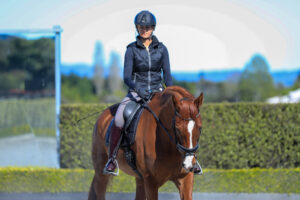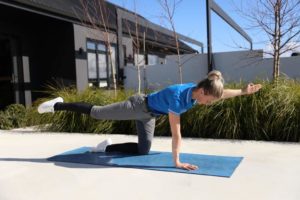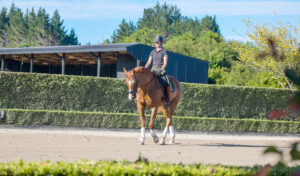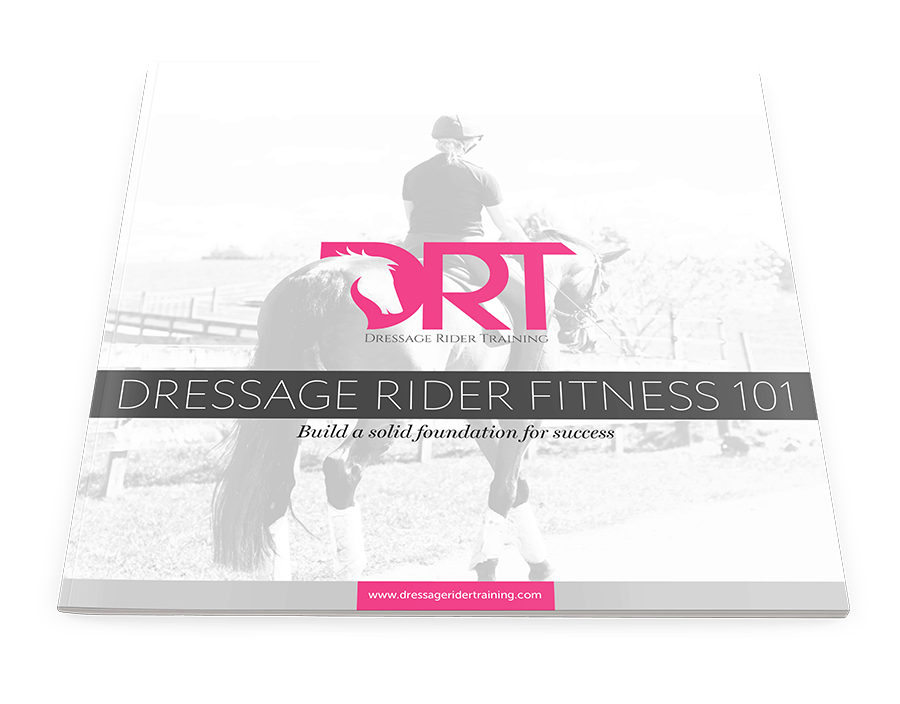Understanding Your Fascia And Its Role In The Saddle
Fascia is a broad term for the connective tissue that weaves throughout the entire body to stabilize and bind our muscles, bones, and organs. It makes up a huge amount of our body, from our tendons, and ligaments to over 30 per cent of our muscles.
The elasticity and plasticity of our fascia are directly responsible for our flexibility, mobility, balance, reflexes, and proprioception. When fascia loses its youthful bounce due to inactivity, lack of mobility, poor nutrition or aging, we feel achy, sore, and unable to perform optimally in physical activities. When we stretch and condition our fascia, we increase mobility, promoting healthier movement and improved quality of life and a much more youthful feel.

Within our DRT programs, we work on our fascia, and we work on fascia conditioning. Re-organizing it into supple, reactive bands. We also work on stretching our fascia; we remould the fascia for improved mobility and flexibility.
“Fascia – or connective tissue, is what glues us together. So, it’s a broad use of the word fascia. What we are really talking about is the body extracellular net that holds us together” – Tom Myers
So what exactly is fascia?
If you think of a piece of meat – like a chicken breast or beef – you can often see a white, sometimes transparent web interweaved through the tissue. This is fascia. Or think of an orange – you can segment it into pieces because each segment is divided by a clear yet strong sheet of tissue. Within these segments, the juice is further segmented – forming the pulp – by this same type of tissue. It’s the same for us! We are segmented, yet intimately connected, by fascia.
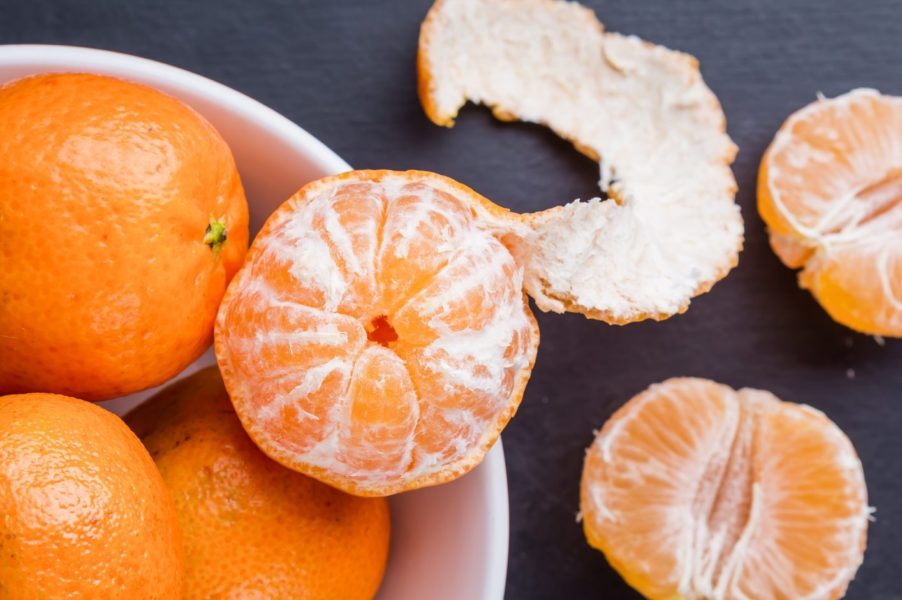
The Qualities Of Fascia
Fascia is made up of three things:
- elastic fibers – allowing for the possibility of change
- collagen fibers (which is very tough) which provides our support and strength
- ground substance which has a gelatinous, fluid texture (when it’s healthy). This fluid quality allows for organs and muscles to glide over each other without friction.
We have a type of fascia found just below the skin (superficial fascia), and beneath this, we have deep fascia – a tougher, tighter form. Embedded in this are our muscles, blood vessels etc. The third kind of fascia lines and forms our body cavities. I see it all as one and the same, one substance that supports, stabilises and guides our body and its functions.
While working as a personal trainer back in 2002, I also worked as a massage therapist and did extra training to learn about fascia. This helped with not only knowing how to train a body’s muscles but also changed the way that I viewed the body and its posture. Which has then helped me with the holistic training of my clients and the creation of our programs.
Our Posture And Form
Fascia is the framework that helps create our posture and form. It’s a structure that organizes us into shapes that functions and move through different movement patterns. When we work with fascia, you could think of it as the idea of ‘wholeness’ and ‘connection’’.
Throughout our programs, we help to pull together all our training and create the feeling of organization in our body to allow us to truly move as one with our horse.
How To Improve Your Fascia
Fascia is made up of ground substance, known for its white fibres, but it is mostly water. This jelly-like layer is happiest when it’s hydrated and juicy. Happy fascia is fluid, it’s springy and strong. Think of the bounciness you love to see in children or young foals or lambs bouncing around the paddock.
When we run or walk, happy fascia will return the force we emit right back to us, making us feel lighter and softer. Healthy fascia means we use less energy to do things, and our muscles and body will work less and move more efficiently. We will discover new strength and flexibility, and space and when it comes to riding we will feel more fluid and supple as we move with the horse.
When we have a restriction in our body, our fascia becomes dehydrated, stiff, weak and stuck. Along with hydration, good nutrition and other healthy lifestyle choices, including yoga, foam rolling and mobility work change your connective tissue.
We can help improve fascia, promote relaxation and restore our fascial fluidity and this is what we work on with the journey you take on our programs. None of this happens overnight or from one massage. It’s through good movement choices, body awareness, mobility, nutrition and other lifestyle factors all covered within our programs. It’s a journey of restoration and adding in layers over time as your body and mind allows.
Fascia and our posture
When I was learning about fascia while doing my massage therapy, I learned a lot about how it affects our posture, I was told to imagine a sheet spread out on the floor. By picking up a part of the sheet and pulling on it, you can clearly see tension lines and folds that spread out from one point to the next. This is how tension in our fascia grid affects us on a 3-dimensional level.
A restriction in our feet can have a knock-on effect right up to our head. This is why it’s so important to take a holistic approach to how you train the body and how we train the rider. These fascia sheets that net around our body can have tension lines where they shouldn’t.
For example you may have more tension pulling down your right hand side if you are right handed. This can then create a slight twist and pull of your posture in this direction. Not only will this affect how aligned you are, but also how you feel when you are in the saddle and not to mention what the horse feels and how coordinated you are with your aids.
How We Train Our Fascia
When we begin with our DRT training, we started with more traditional stretching that allowed us to work on areas that are often tight and blocked as riders. This has allowed us to improve our biomechanics and become much more supple when we ride.
As we progress with our training and programs we work into plasticity and conditioning, to really help improve this fascia net that surrounds our entire body. This will increase your potential to be more flexible, and improve your bounce and elasticity.
The fascia is what surrounds our body; it surrounds our bones and surrounds everything. It holds everything together through tension and compressions. We go into training the body to have more elasticity and bounce.
We train the body by training the fascia. We are conditioning it to be younger and more elastic and more responsive. That means we are better at balancing, our reaction times improve and we get better at moving and becoming one with the horse. Any kind of dynamic movement that we do we are going to be better at.
When we think about movement and proprioception like riding. A lot of different things are feeding back that keep us in that balance. The fascia responding to the balance of my movement, is ten times more reactive than my muscles.
It’s this amazing thing, and if we train elasticity of that and organise the fascia into these patterns we can physically move better, respond better, heal better and… we can fall better!
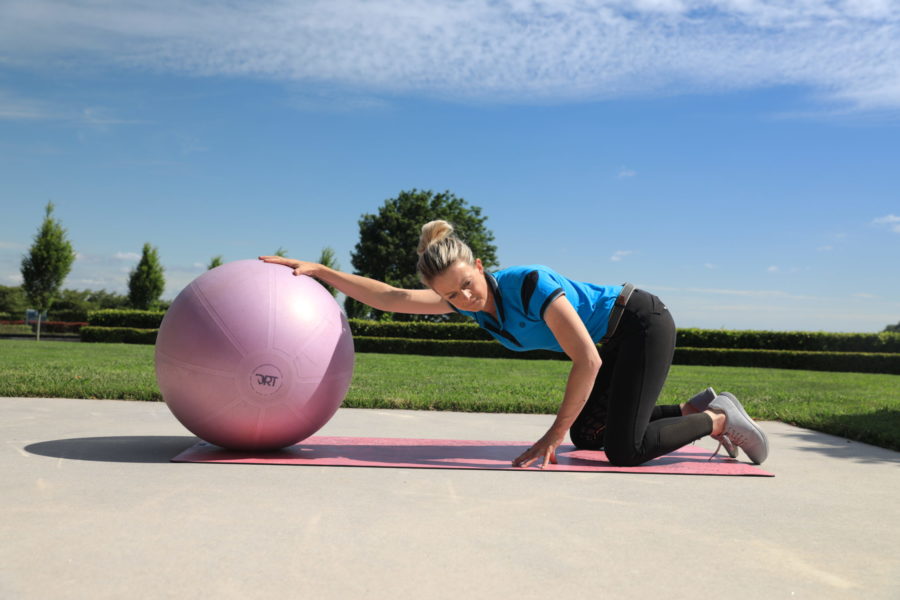
Want more stretching you can do to help your posture? Check out these articles.
Lower cross syndrome in dressage riders
Upper cross syndrome in dressage riders
Flexor chain stretches for dressage riders
Strength training for dressage riders
Glute Strengthening Exercises For Riders
More articles
Dressage Rider Training Program
Join other participants on our 12-week 'step-by-step' online rider
training program. Improve the 5 components of your riding.
Only available 3x per year.
see full details & register your interest

